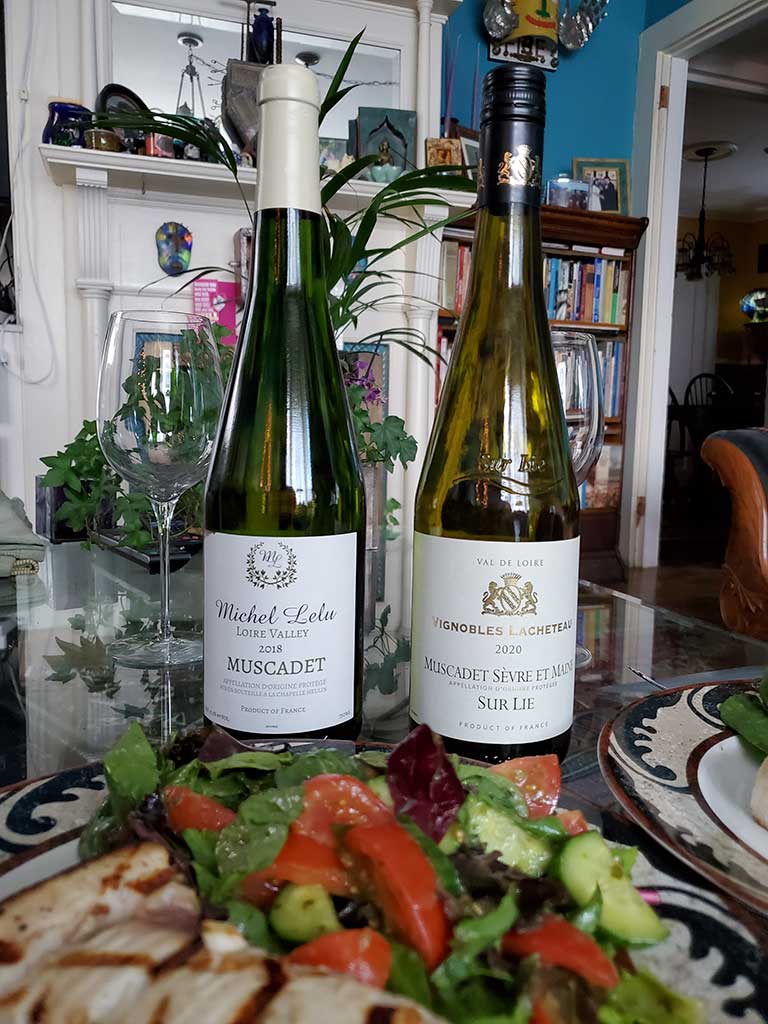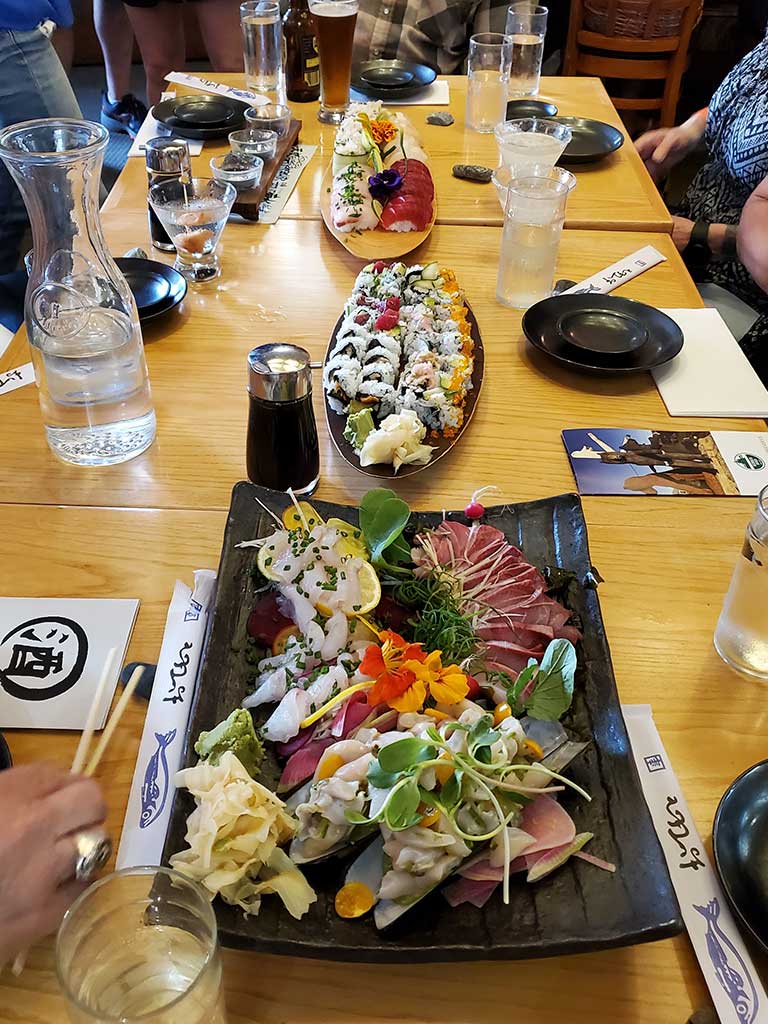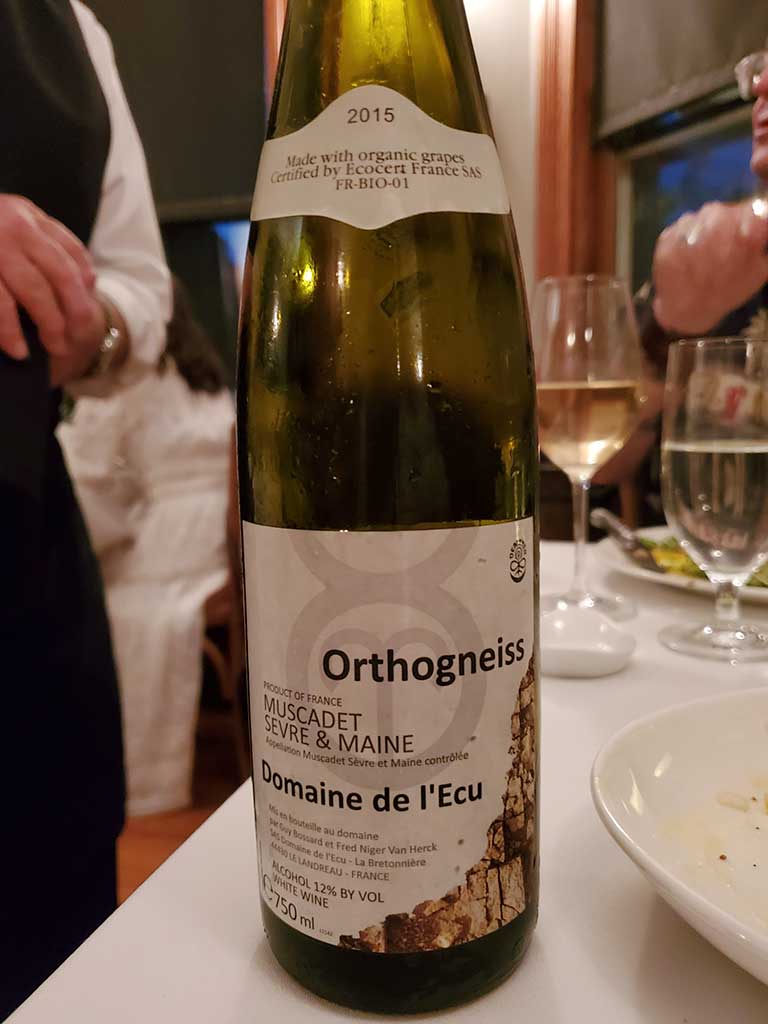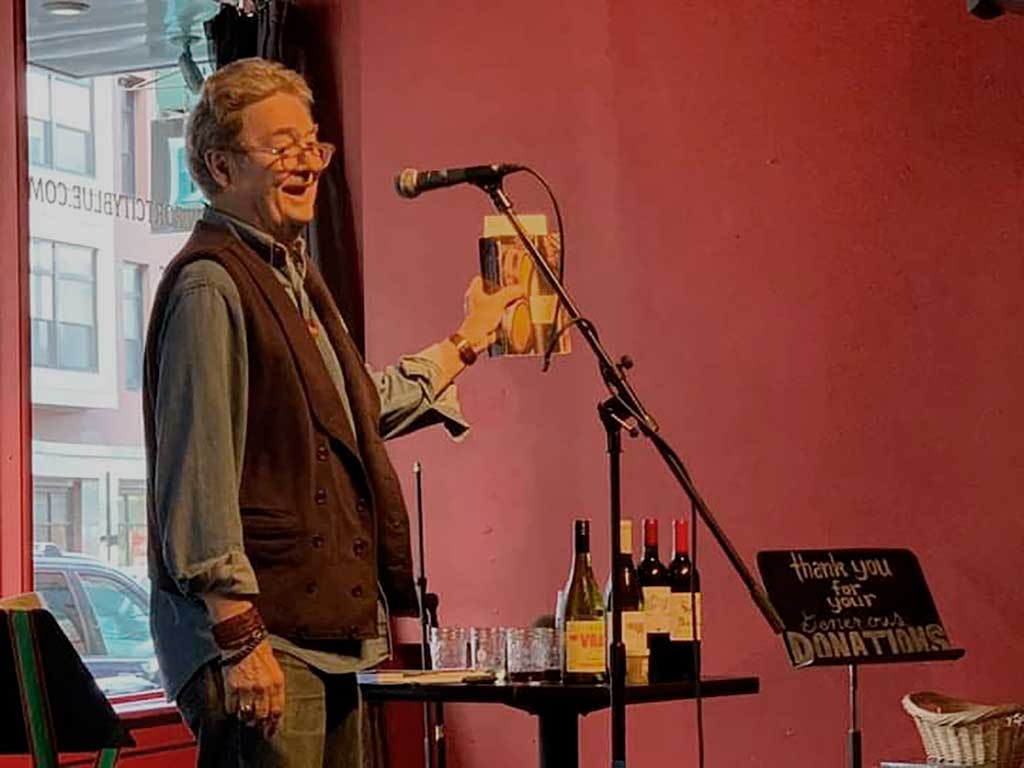Layne’s Wine Gig
MUSCADET
By Layne V. Witherell
Muscadet has a problem. The wine from that famous 650-mile river in the Loire Valley in France is white and dry, tastes of “salinity and seashells“ (notes wine writer Jacqueline Friedrich), and is a perfect seafood accompaniment (including sushi).
The name on the label, unfortunately, blares out “sweet wine.” Our tiny social media saturated brains blink Moscato, the polar grape and flavor opposite of Muscadet. The mega wine companies have blanketed our world with Moscato. To find Muscadet, you must sometimes look harder than you think.
In the past month or so, I have taken a “Muscadet Dive,” discovering books, out of the way sources, and a variety of wines. The name refers to wine with a musk-like taste.
MICHEL LELU MUSCADET, 2018, $10.00

This is Muscadet at its most basic. The grape is Melon de Bourgogne (originally from Burgundy, France). In order to really delve, you need the book: Jacqueline Friedrich’s Wine and Food Guide to the Loire. You discover that Muscadet isn’t like Chardonnay or Sauvignon Blanc. It is lighter, less tasting of a grape variety than a place. “From vinous mouthwash to great shellfish accompaniment,” writes Friedrich. You also learn that to really appreciate the region you need to read this book. Also, if you are traveling, carry this along for info and just for a great read.
VIGNOBLES LECHATEAU MUSCADET SEVRE-ET-MAINE SUR LIE, 2020, $10.00
The good news with Muscadet? You can step up the game without breaking the bank. The most famous, fashionable, and Gucci trend-able wine from the Loire is Sancerre, a Sauvignon Blanc based white that will set you back $40.00 plus on a good day. Muscadet is lighter, but for the extra thirty bucks and change you saved you can have a party!
Words, words, words. Sevre et-Maine is the major zip code location of the Muscadet region. Better zip code, better wine, so goes the theory. This is a co-op made wine from the inner reaches of Muscadet.
Sur Lie? Since there isn’t a rush to oak age these lighter wines, they use a technique called sur lie. After fermentation, the yeast cells die and settle to the bottom of the barrel. They leave them there and give them a stir to create a creamy complexity, “a rich bone marrow texture,” from Friedrich, which imparts more flavor.
In France, there are laws for everything. Some producers want a zippy removal of the “lees,” others want a forever wait, intensifying flavor and texture. It depends on who makes the wine.
This Muscadet, because of its youth, is spritelier and more exuberant than the older Lelu. Usually drink them on the youngish side. At 25,000 acres, there is a lot of Muscadet produced. Most bottles of it, then and now, have wound their way up the river to Paris to slake the great bistro thirst.
Muscadet History
A problem that vexes me as a historian is the where and when part of the story. Many families go back eighteen generations as growers and producers – but who started it? There is a trove of famous ancestors like Eleanor of Aquitaine, Henri 2nd, and Richard the Lionhearted, Joan of Arc, and don’t forget Charles Martel, who destroyed the dreams of the Califate in 732 in Poitiers. Earlier history is a mist and a cloud.
(Fun side note: The Dutch used the grapes for brandy in the 17th Century. A real loss.)
Out of somewhere, popped this book: Medieval People, 1924, by Eileen Power (late reader of History, University of London). This is it. The book that leads you to the little-known Roman Emperor Probus (ruled AD 276 – AD 282) and the origin of those grapes. Probus was elected by the troops as emperor, having dispatched in battle 400,00 Germans and many others.
Probus liked to have the legions constantly work – building roads, temples, bridges, and planting grapes. They dispatched him in 282 as, I guess, an early labor strike, but the vines and wines remained. Who drank them?
HISTORY: THE TROOPS
They drank posca (a vinegar, water, wine drink) for strength and nourishment. Every other day, it was wine. Many legion members worshipped the Persian sun god Mithras. It was the original “bro” religion-men only. A chief rival to Christianity, it was outlawed in AD 395. A few of their underground temples with bull sacrifice images still exist.
HISTORY: THE LOCALS
Christians used the wines of the region for mass and exported, paid taxes, and sold wines.
Dionysian’s followers were still going strong. There is a mural in Pompeii in the Villa of the Mysteries that shows an initiation into this strangest of wine god mystery religions. For the young initiate, there is a lot of drama, drinking of much wine, and clashing of cymbals. We can only guess?
This leads us to the best part of the search for Muscadet. After you have used many bottles to wash down shellfish, sushi, and countless wonderful things from the sea, up pops the big one when you least expect it, “from light (in flavor) to an archaeological dig,” Friedrich again.

DOMAINE de l’ECU MUSCADET SEVRE-ET- MAINE “ORTHOGNEISS”, 2015, $22.00 (retail) $42.00 (restaurant)

I like restaurants, but they are mostly predictable. The couple ordering the bottle of that cliché of clichés Sancerre, like they have just discovered its existence. The older dowager in the corner table impressing herself and the young’uns with a bottle of Kistler Chardonnay at north of $250.00 – just to say in a quiet, sniffy voice, “Ah, gee.”
It is thrilling to (A) find the greatest Muscadet producer; (B) spend about as much for it as a cheesy Coastal California Chardonnay; (C) most importantly, to enjoy it at dinner with my wonderful wife.
Here Goes: Pull a picture of the winery up on your phone. It is an ancient Minoan temple interior. Probus and the bros would be so proud. Probably the Dionysian’s, too. It is an infomercial for biodynamic wine, right down to their dirty boots. Sure 2015 is kind of old for a Muscadet, but they pull it off. “Mineral, pine fruit. Beautifully structured with incredible freshness and mineral expression,” grants Friendrich.
I never take notes on wines while dining with my wife. In the hour that we contemplated this masterwork over dinner I just had to manage a few jottings. “A magnificence very unlike Chardonnay or White Burgundy. It changes minute by minute. Salinity and oxidation as an art form. As it opens, it becomes like an oyster bed from the sea.”
Two questions remain…
- According to Friedrich, Muscadet has never placed anyone in the Winemakers Hall of Fame. Is it time? Will it ever be time?
- “Natural wine is a fantasy of marginal winemakers,” says Michel Bettane, a leading wine critic from France. Shouldn’t we start a list and figure out the great ones from the marginal ones, instead of just lumping them into an all is great or all are rotten mindset?
At the end of this month, I have learned more about the history of Muscadet than I ever thought I would know. Thank you, Tony Zeli, publisher and Judy Witherell, editor/photographer for letting me bring this to you.
LAYNE’S WINE GIG – THIRSTY THIRD THURSDAY
For an afternoon of snark, fun, and wine come to Blue, 650 Congress Street, Portland, from 5-6 p.m. Four pours of 3 oz. each for twelve bucks. Check their website for vax requirements. No reservations are required. Visit portcityblue.com.

Layne has been a professional in the wine business for many decades as a teacher, importer, writer, competition judge, and winery CEO. He was awarded the Master Knight of the Vine for his pioneering work in the Oregon wine industry. He can be reached at lvwitherell@gmail.com.





